Introduction
Staying active becomes increasingly important as we age, and cardio exercises offer a host of health benefits, especially for seniors. Cardiovascular exercise, also known as aerobic exercise, refers to any physical activity that raises your heart rate and keeps it elevated for an extended period of time. These exercises are essential for maintaining a healthy heart, improving lung capacity, boosting energy levels, and even enhancing mood. For seniors, cardio exercises are particularly important because they can help combat the natural decline in physical fitness that comes with aging, supporting both physical and mental well-being.
Cardio exercises don’t have to be intense or high-impact to be effective. In fact, seniors can benefit from low-impact cardio activities that are gentle on the joints while still providing excellent cardiovascular benefits. Activities like walking, swimming, cycling, and even dancing are perfect examples of low-impact cardio exercises that can be adapted to suit any fitness level. The key is to find an activity that is enjoyable, sustainable, and safe for individual health conditions.
Many older adults may shy away from exercise due to fear of injury, discomfort, or lack of knowledge about what exercises are appropriate. However, with proper guidance and a gradual approach, seniors can safely engage in cardio activities that will improve their overall quality of life. By incorporating regular cardio exercises into their routine, seniors can maintain their independence, improve mobility, and even extend their lifespan.
Here are just a few key benefits of cardio exercises for seniors:
- Heart Health: Cardio activities strengthen the heart muscle, reduce blood pressure, and lower the risk of heart disease.
- Improved Mental Health: Exercise releases endorphins, which help reduce stress and anxiety while promoting a positive outlook on life.
- Enhanced Mobility and Balance: Regular cardio helps maintain joint flexibility, improves balance, and reduces the risk of falls.
Encouraging seniors to embrace these benefits can empower them to lead healthier, more active lives well into their golden years.
1. Why Cardio is Important for Seniors
As we grow older, maintaining an active lifestyle becomes crucial to preserving both physical and mental health. Cardiovascular exercises, in particular, offer numerous benefits for seniors, helping them stay fit and healthy while improving their overall quality of life. Here are five key reasons why cardio exercises are especially important for older adults:
- Heart Health and Circulation
One of the most significant benefits of cardio exercises is their positive impact on heart health. As we age, our heart becomes less efficient at pumping blood, which can lead to higher blood pressure and an increased risk of cardiovascular diseases. Regular aerobic activity strengthens the heart muscle, allowing it to pump blood more effectively. This improved circulation can help lower blood pressure, reduce bad cholesterol levels, and decrease the risk of heart attacks and strokes. Activities such as walking, swimming, or cycling can keep the heart in top condition, helping seniors maintain a healthy cardiovascular system. - Improved Lung Function
Cardiovascular exercises are also crucial for improving lung function. As we age, lung capacity naturally declines, making it harder to breathe deeply and efficiently. Regular aerobic exercise helps improve the efficiency of the lungs, increasing oxygen flow to the body’s tissues and organs. This leads to better endurance and stamina, allowing seniors to perform daily tasks with greater ease and less fatigue. Seniors who engage in regular cardio exercises are likely to experience enhanced respiratory health and greater energy levels overall. - Mental Health Benefits
Cardio exercise is not only good for the body, but also for the mind. Aerobic activities release endorphins, often referred to as "feel-good" hormones, which help reduce stress, anxiety, and depression. Seniors who exercise regularly often report feeling more energized and in better spirits. Additionally, cardio exercises can improve cognitive function, supporting memory and focus, which is crucial in preventing age-related mental decline. - Weight Management and Metabolism
As metabolism slows down with age, many seniors struggle with weight gain, which can lead to a host of health problems such as diabetes and joint strain. Cardio exercises are an effective way to burn calories and maintain a healthy weight. Even moderate-intensity activities, such as walking or dancing, can increase metabolism, helping seniors avoid weight-related complications and maintain a healthy body weight. - Increased Mobility and Independence
Cardio exercises help maintain joint flexibility and muscle strength, which are essential for balance and mobility. Seniors who engage in regular aerobic activity are less likely to suffer from mobility issues and are better able to perform daily tasks independently. This independence can improve their quality of life and reduce the risk of falls, a common concern for older adults. Improved mobility through cardio also supports long-term bone health and flexibility, further reducing injury risks.
In summary, cardio exercises play a vital role in promoting overall health and longevity for seniors. From heart and lung function to mental well-being and physical independence, the benefits of staying active in later years are profound and far-reaching.
2. Types of Low-Impact Cardio Exercises for Seniors
Cardio exercises are essential for seniors, but not all forms of cardiovascular activity are suitable for everyone, particularly older adults with joint concerns or mobility limitations. Low-impact cardio exercises offer a fantastic alternative, providing heart health benefits without placing undue strain on the body. These exercises are gentler on the joints while still offering an effective workout. Below, we explore several types of low-impact cardio exercises that are ideal for seniors, detailing how they can be adapted to fit different fitness levels.
Walking
Walking is one of the simplest and most effective forms of low-impact cardio exercise. It requires no equipment, can be done anywhere, and is easy to adjust to any fitness level. For seniors, walking helps improve cardiovascular endurance, strengthen the leg muscles, and enhance balance, all while being gentle on the joints.
- Benefits for Seniors: Walking increases heart rate, improves circulation, and burns calories. It also promotes mobility and independence, as well as reduces the risk of heart disease and stroke.
- How to Start: Begin with short, comfortable walks around the neighborhood or in a local park. Gradually increase the duration and pace over time, aiming for at least 30 minutes a day, most days of the week.
- Variations: Use a treadmill if outdoor walking is not an option, or join a mall-walking group
Swimming and Water Aerobics
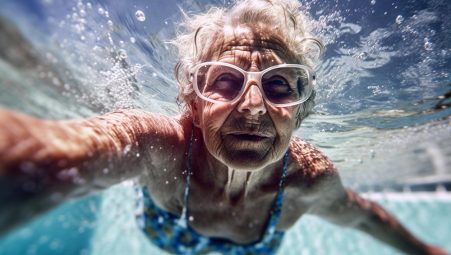
Water-based exercises, such as swimming and water aerobics, are excellent for seniors because they provide resistance without stressing the joints. The buoyancy of water supports the body’s weight, making it easier for individuals with arthritis or other joint problems to exercise comfortably.
- Benefits for Seniors: Swimming and water aerobics improve cardiovascular fitness, muscle strength, flexibility, and balance. They are also effective for maintaining bone density and reducing the risk of falls.
- How to Start: Seniors can join water aerobics classes at local pools or simply start with basic swimming. For those new to water exercises, beginning with light movements, such as walking in the shallow end or gentle laps, is a great way to ease into the routine.
- Variations: Try water jogging or use pool noodles and floating devices to add resistance for a more challenging workout.
Cycling (Stationary or Outdoor)
Cycling, whether on a stationary bike indoors or on a regular bike outdoors, is another excellent low-impact cardio option. It strengthens the legs, improves cardiovascular health, and enhances balance without putting pressure on the knees or hips.
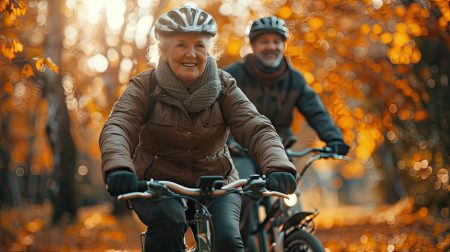
- Benefits for Seniors: Cycling boosts endurance, helps manage weight, and reduces the risk of chronic conditions such as high blood pressure and diabetes. It also helps keep leg muscles strong, which is essential for mobility and balance.
- How to Start: Begin with 10-15 minute sessions at a low resistance setting on a stationary bike or opt for short outdoor rides on flat, even terrain. Gradually increase the time and intensity as fitness improves.
- Variations: For added comfort and safety, consider using a recumbent bike, which provides additional back support and is easier to balance on than a traditional upright bike.
Chair Aerobics
For seniors with limited mobility or balance issues, chair aerobics provide a safe way to get the heart pumping. These exercises are performed from a seated position and can include arm circles, leg lifts, and stretches, making them ideal for those who need a low-risk workout option.
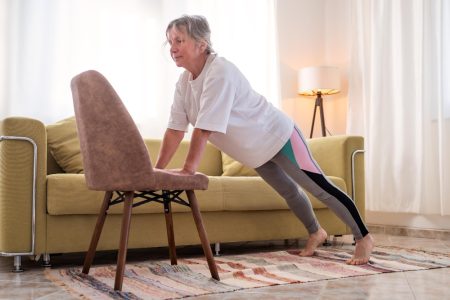
- Benefits for Seniors: Chair aerobics help improve cardiovascular health, enhance muscle tone, and boost flexibility. They are particularly useful for seniors recovering from surgery or dealing with chronic pain, as they can be modified to suit individual capabilities.
- How to Start: Many senior centers and fitness organizations offer chair aerobics classes, but they can also be done at home using online tutorials. Begin with a short session of 10-15 minutes and build up as strength and stamina increase.
- Variations: Add light weights or resistance bands for a more challenging workout, focusing on upper body strength and endurance.
Dancing
Dancing is not only a fun way to stay active, but it also provides excellent cardiovascular benefits. Whether it’s slow ballroom dancing or more energetic Zumba classes, dancing allows seniors to exercise while enjoying the rhythm of music, making it an enjoyable and social activity.
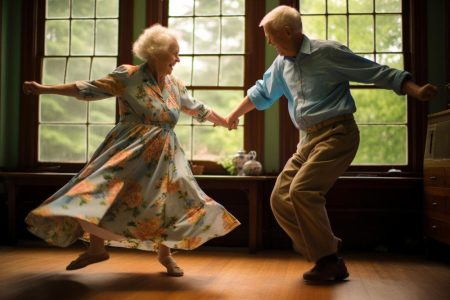
- Benefits for Seniors: Dancing improves heart health, coordination, and balance. It also supports cognitive health by challenging the brain to remember steps and stay in sync with music. Moreover, it can be a mood booster, reducing symptoms of depression and anxiety.
- How to Start: Seniors can join dance classes such as ballroom, line dancing, or even senior-focused Zumba classes. Dancing can also be done at home with a partner or by following along with online dance routines.
- Variations: For those with limited mobility, seated dance routines or slower-paced dances, such as waltz, can be a gentle yet effective cardio option.
Tai Chi
Though often associated with balance and flexibility, Tai Chi also provides low-impact cardiovascular benefits. This ancient Chinese practice involves slow, flowing movements that are easy on the joints but still elevate the heart rate.
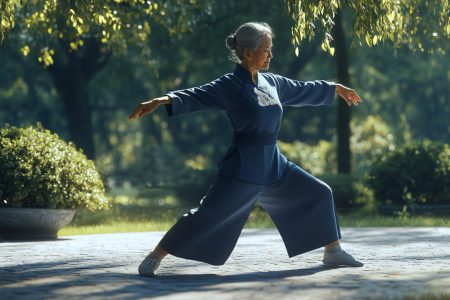
- Benefits for Seniors: Tai Chi improves heart health, promotes balance, and enhances flexibility. It is also known to reduce stress and improve mental clarity, making it a holistic approach to senior wellness.
- How to Start: Many senior centers and community organizations offer beginner Tai Chi classes, but seniors can also follow online tutorials at their own pace. The key is to focus on form and breathing rather than speed or intensity.
- Variations: As seniors become more comfortable with Tai Chi, they can incorporate deeper movements or longer sessions to increase the cardiovascular challenge.
By incorporating these low-impact cardio exercises into their routine, seniors can reap the benefits of improved cardiovascular health, greater mobility, and enhanced mental well-being without putting unnecessary strain on their joints. These activities can be easily adapted to different fitness levels, making them accessible and safe for most older adults.
3. Benefits of Low-Impact vs. High-Impact Cardio
Low-impact cardio exercises offer numerous advantages for seniors compared to high-impact activities. These exercises are particularly suitable for older adults, providing essential cardiovascular benefits while minimizing the risk of injury or strain. Here are four key reasons why low-impact cardio is often preferable for seniors over high-impact exercises:

- Joint Protection and Reduced Risk of Injury
As we age, our joints become more vulnerable to wear and tear, leading to conditions such as arthritis or joint pain. Low-impact exercises, such as swimming, walking, or cycling, place minimal stress on the joints, making them ideal for seniors with arthritis or joint problems. In contrast, high-impact exercises like running or jumping can aggravate joint pain and increase the risk of injury, especially in older adults who may already have reduced bone density. - Sustainability and Long-Term Fitness
Low-impact cardio exercises are generally easier to maintain over the long term because they are less physically taxing and less likely to lead to burnout. Seniors who engage in low-impact activities are more likely to stick with their exercise routines, which is key for maintaining heart health and overall fitness. High-impact exercises, on the other hand, can be more challenging to sustain, especially for those with chronic health issues or limited mobility. - Improved Balance and Mobility
Low-impact cardio exercises like Tai Chi, water aerobics, and chair exercises help seniors improve their balance, coordination, and flexibility. These activities support muscle strengthening and joint flexibility, which are crucial for preventing falls and maintaining mobility. High-impact exercises may build strength and endurance but may not focus as much on these aspects of balance and flexibility, potentially increasing the risk of falls. - Accessibility and Adaptability
Low-impact cardio exercises are highly adaptable to individual fitness levels and abilities, making them accessible to a wider range of seniors. Whether it’s walking, swimming, or dancing, these exercises can be easily modified to accommodate different health conditions, ensuring that seniors can remain active regardless of their physical limitations. High-impact exercises are often less adaptable, requiring higher levels of physical fitness to perform safely.
Low-impact cardio provides a safer, more sustainable path for seniors to improve their cardiovascular health, maintain their independence, and enhance their overall well-being.
4. How to Start a Cardio Routine Safely
Starting a cardio routine is essential for seniors, but it’s important to do so safely, especially for those who may have existing health conditions or limited mobility. Here are three key steps to ensure a safe and effective start to a senior-friendly cardio exercise routine:

- Consult with a Healthcare Professional
Before starting any new exercise routine, it’s critical for seniors to consult with their doctor or healthcare provider. This is especially important for those with pre-existing conditions like heart disease, diabetes, or joint issues. A healthcare professional can provide personalized advice based on the individual’s health status, recommend appropriate types of exercises, and identify any activities that should be avoided. They may also offer guidelines for monitoring heart rate and other vital signs during exercise to ensure the activity remains safe. - Start Slowly and Progress Gradually
It’s essential for seniors to begin their cardio routine at a comfortable pace and gradually increase the intensity and duration of exercise over time. Starting slowly helps the body adjust to the new activity and reduces the risk of injury or overexertion. For instance, seniors can begin with a 10-15 minute walk and gradually build up to 30 minutes or more as their endurance improves. Gradual progression also prevents discouragement and fatigue, making it easier to maintain a consistent routine. - Prioritize Warm-Up and Cool-Down
Warming up before exercise and cooling down afterward is crucial for preventing injury and aiding recovery. A proper warm-up, consisting of light movements or stretching, prepares the muscles and joints for activity by increasing blood flow. Similarly, a cool-down period helps the heart rate return to normal and reduces muscle stiffness. Stretching after exercise also improves flexibility and prevents soreness, which is especially important for seniors who may experience slower recovery times.
5. Sample Weekly Cardio Workout Plan for Seniors
Creating a structured cardio workout plan is essential for seniors who want to stay active while maintaining a safe and effective exercise routine. A well-rounded plan includes low-impact exercises that focus on cardiovascular health, flexibility, and strength. Here’s a simple, adaptable 5-day cardio workout plan that seniors can follow to improve their fitness level over time.
Day 1: 20-Minute Walk
Walking is one of the best ways to begin a cardio routine. It’s low-impact, easy to perform, and can be adjusted based on fitness level. Start the week with a 20-minute walk at a comfortable pace, either outdoors or on a treadmill. Focus on maintaining a steady rhythm, using proper walking posture, and breathing deeply to get the most out of this workout.
- Goal: Improve cardiovascular endurance and increase mobility.
- Tip: Use a pedometer or fitness tracker to monitor steps and progress over time.
Day 2: 30-Minute Water Aerobics or Swimming
Water exercises are excellent for seniors as they provide a full-body workout without placing stress on the joints. Engage in a 30-minute session of water aerobics or swim gentle laps in a pool. This exercise strengthens muscles, improves cardiovascular health, and enhances flexibility, all while being gentle on the body.
- Goal: Strengthen muscles, improve heart health, and enhance joint flexibility.
- Tip: Join a water aerobics class for added social interaction and motivation.
Day 3: Chair Aerobics (20 Minutes)
For seniors with limited mobility or balance issues, chair aerobics is a safe and effective option. This 20-minute session can include arm raises, leg lifts, and stretches to get the heart rate up while staying seated. Chair exercises are ideal for improving upper body strength, flexibility, and circulation without the risk of falling.
- Goal: Improve cardiovascular health and muscle tone without standing.
- Tip: Incorporate light weights or resistance bands to enhance the workout.
Day 4: 30-Minute Bike Ride (Stationary or Outdoor)
Cycling is another great low-impact cardio exercise that strengthens the legs, improves balance, and boosts cardiovascular endurance. If riding outdoors, find a flat, even route. Alternatively, use a stationary bike indoors for safety and convenience. A 30-minute ride at a moderate pace is perfect for building endurance and maintaining heart health.
- Goal: Strengthen leg muscles, improve endurance, and enhance cardiovascular fitness.
- Tip: For added comfort, use a recumbent bike, which provides back support and is easier to balance on.
Day 5: Rest or Gentle Stretching
Rest days are vital for recovery, allowing muscles to heal and preventing overexertion. On this day, seniors can perform light stretching exercises to improve flexibility and reduce stiffness. Gentle yoga or simple stretches can also aid in promoting relaxation and mental well-being.
- Goal: Recover and improve flexibility.
- Tip: Use deep breathing techniques during stretches to enhance relaxation and reduce stress.
This balanced workout plan can be adjusted based on personal fitness levels and preferences. By following a consistent routine, seniors can significantly improve their cardiovascular health, mobility, and overall well-being.
6. Tips to Stay Motivated
Maintaining motivation for a consistent cardio routine can be challenging, especially for seniors. However, there are several strategies that can help older adults stay on track and enjoy their fitness journey. Here are four key tips to help seniors remain committed to their cardio exercises:
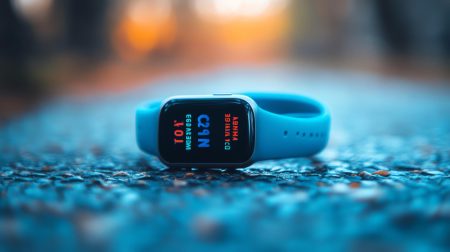
- Join a Senior Exercise Group or Fitness Class
Exercising with others can be a powerful motivator. By joining a group fitness class, whether it’s for water aerobics, chair yoga, or walking clubs, seniors can benefit from social interaction and a sense of community. Group settings foster accountability and provide encouragement, making exercise feel more like a fun, social activity rather than a chore. In addition, many senior fitness classes are tailored to meet the needs and abilities of older adults, ensuring a safe and comfortable experience. - Use Fitness Trackers to Monitor Progress
Tracking progress is a great way to stay motivated. Seniors can use simple fitness trackers or smartphone apps to monitor their steps, distance, or heart rate during workouts. Seeing gradual improvements over time—such as walking farther or cycling longer—can create a sense of achievement. Setting small, achievable goals and celebrating each milestone can keep motivation levels high and provide a sense of purpose. - Vary Exercises to Keep Workouts Fun
Doing the same routine day after day can lead to boredom and burnout. To avoid this, it’s important to introduce variety into a cardio routine. Seniors can try different types of activities such as dancing, swimming, or biking. Incorporating diverse exercises not only keeps workouts interesting but also challenges different muscle groups and prevents physical plateaus. - Involve Friends or Family
Exercising with friends or family can enhance motivation and make workouts more enjoyable. Whether it’s walking with a neighbor, attending a dance class with a friend, or taking part in family fitness activities, working out with loved ones provides support and encouragement. This shared experience strengthens relationships and adds an extra layer of fun and accountability to the routine.
By following these tips, seniors can maintain their enthusiasm for regular cardio exercises, improving both their physical health and overall well-being.
Conclusion
Cardio exercises play a vital role in maintaining health and well-being as we age, and they offer numerous benefits for seniors. From improving heart and lung function to enhancing mental health and mobility, regular aerobic activity can significantly enhance the quality of life for older adults. The key is to choose low-impact exercises that are gentle on the joints and tailored to individual fitness levels. By incorporating activities like walking, swimming, chair aerobics, and cycling into their weekly routine, seniors can enjoy the advantages of cardio without the risk of injury.
In addition to physical benefits, cardio exercises also offer emotional and cognitive improvements, helping seniors maintain independence and lead more fulfilling lives. Consistency and variety in a workout plan, along with proper guidance and motivation, are essential to ensuring long-term success in staying active.
Here are the key takeaways:
- Heart Health: Regular cardio exercise strengthens the heart, improves circulation, and reduces the risk of heart disease and stroke.
- Improved Mobility: Low-impact cardio improves joint flexibility, muscle strength, and balance, helping seniors stay mobile and independent.
- Mental Well-being: Cardio releases endorphins, reducing stress, anxiety, and depression, while also improving cognitive function.
- Safe and Adaptable: Low-impact cardio exercises are easily adaptable to individual fitness levels, allowing seniors to stay active without risk of injury.
Encourage seniors to take the first step toward a healthier lifestyle by integrating safe, enjoyable cardio exercises into their daily routine.


